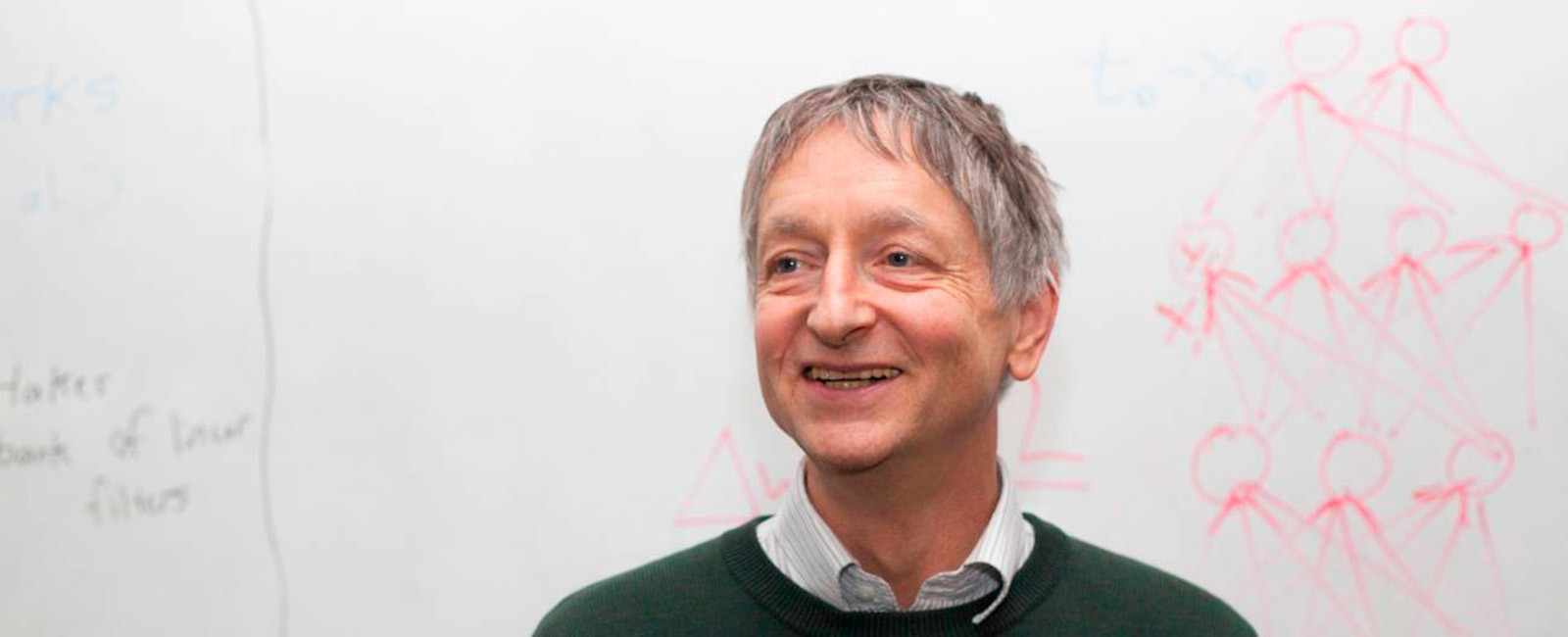
The Nobel Prize in Physics has gone to Geoffrey Hinton, Frontiers of Knowledge laureate in 2016
Geoffrey Hinton, winner of the 9th BBVA Foundation Frontiers of Knowledge Award in Information and Communication Technologies, was announced today as co-winner with John Hopfield of the 2024 Nobel Prize in Physics. The committee of the Royal Swedish Academy of Sciences awarded them the prize for laying the foundations of artificial intelligence.
8 October, 2024
Hinton (London, United Kingdom, 1947) shares the Nobel Prize in Physics with John Hopfield “for foundational discoveries and inventions that enable machine learning with artificial neural networks,” in the words of the Nobel citation. “The laureates’ work has already been of the greatest benefit. In physics we use artificial neural networks in a vast range of areas, such as developing new materials with specific properties,” said Ellen Moons, Chair of the Nobel Committee for Physics.
In 2017, Hinton received the BBVA Foundation Frontiers of Knowledge Award in Information and Communication Technologies. The new laureate, said the committee at the time, “is inspired by how the human brain works and how this knowledge can be applied to provide machines with human-like capabilities in performing complex tasks.”
“The best learning machine we know is the human brain,” said Hinton in an interview after receiving news of the Frontiers of Knowledge Award. “And the way the brain works is that it has billions of neurons and learns by changing the strengths of connections between them. So one way to make a computer learn is to get the computer to pretend to be a whole bunch of neurons, and try to find a rule for changing the connection strengths between neurons, so it will learn things like the brain does.”
The research by the eminent scientist now recognized by the Swedish Academy focused precisely on discovering the rules that make it possible to strengthen the connections of an artificial neural network, enabling a computer to, in effect, learn. Rather than operating according to predefined logical rules, in machine learning a computer operates more like the human brain. By checking its own predictions against the thousands of examples it is supplied with during training, the machine uses its hits and misses to weaken or strengthen its neural network connections, learning from its own experience.
Two unexpected successes
After graduating from the University of Cambridge in 1970, with a BA in Experimental Psychology, he went on to the University of Edinburgh, where in 1978 he earned a PhD in Artificial Intelligence with a thesis on neural networks. For years, he recalls, his thesis advisor urged him to switch fields “on a weekly basis.” His reply never varied: “Give me another six months and I’ll prove to you that it works.” Unable to raise the necessary research funding in his home country, he opted to emigrate, first to the U.S. then Canada, and the University of Toronto. Still determined to find inspiration in the brain, he assembled a group there in 2004 made up of experts in computing, electronics, neuroscience, physics and psychology.
Against all expectations, in 2009 Geoffrey Hinton and his students developed a neural network for voice recognition that improved substantially on the incumbent technology; a product, in turn, of thirty years’ work. Not long after, in 2012, a sophisticated network comprising 650,000 neurons, and trained with 1.2 million images, managed to reduce the object recognition error rate by almost half, without anyone having previously described it.
Hinton has worked at the universities of Sussex (United Kingdom), California at San Diego and Carnegie-Mellon (United States), and the University of Toronto (Canada), where he is currently a professor in the Department of Computer Science. From 2013 to 2023, he combined his work at the University of Toronto with the position of Vice President of Engineering at Google.
27 Frontiers awardees have gone on to win the Nobel Prize
The award of the Nobel in Physics to Geoffrey Hinton makes a total of 27 Frontiers of Knowledge laureates that have later won the Nobel Prize.
Eleven Frontiers awardees have gone on to receive the Nobel Prize in Economics: Lars Peter Hansen (2013), Jean Tirole (2014), Angus Deaton (2015), William Nordhaus (2018), Abhijit Banerjee and Esther Duflo (2019), Paul Milgrom and Robert Wilson (2020), David Card (2021), Ben Bernanke (2022) and Claudia Goldin (2023).
In the case of the Nobel Prize in Medicine, six Frontiers laureates were subsequently distinguished by the Swedish Academy: Shinya Yamanaka (2011), James P. Allison (2018), David Julius and Ardem Patapoutian (2021) and Katalin Karikó and Drew Weissman (2023).
The Nobel Prize in Physics has found its way to seven previous Frontiers awardees: Didier Queloz and Michel G. E. Mayor (2019), Klaus Hasselman and Syukuru Manabe (2021) Ferenc Krausz and Anne L’Huillier (2023), and Geoffrey Hinton (2024).
Finally, in the case of the Chemistry Nobel, the Swedish Academy has recognized the work of three Frontiers awardees: Robert J. Lefkowitz in 2012, and Emmanuelle Charpentier and Jennifer Doudna in 2020.

